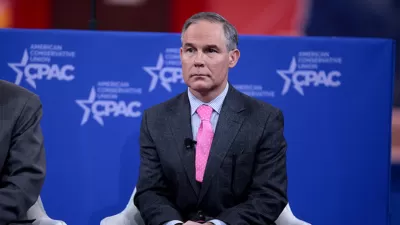The cuts mean that China is on target to meet its coal power generation limit for year 2020. But even with the cancellations, China will have surplus coal power resulting in underutilization of renewable power due to preference for coal by utilities.

The massive cancellations follows the announcement last August that coal usage in the world's most populous and greenhouse-gas emitting nation peaked in 2014.
"The cancellations make it likelier that China will meet its goal of limiting its total coal-fired power generation capacity to 1,100 gigawatts by 2020," reports Michael Forsythe for The New York Times.
Too much coal power
That huge figure, three times the total coal-fired capacity in the United States, is far more than China needs. Its coal plants now run at about half of capacity, and new sources of power, like wind, solar and nuclear, are coming online at a fast clip.
The canceled projects, some under construction, would have contributed 120 gigawatts of power. "The new announcements are in addition to cancellations detailed last year," adds Forsythe.
The 2020 target was set in November as part of a new five-year plan that limits coal to 55 percent of total electrical power generation.
"Overcapacity in coal power has pitted renewable energy and coal against each other in the grid and led to a substantial proportion of renewable power generation being wasted...," reported Lauri Myllyvirta for Energy Desk Greenpeace.
"Grid operators often favor power generated from coal plants over that made by wind and solar, and despite the cuts, China is still building far more capacity than it needs, " adds Forsythe. Furthermore, he casts doubt on whether some of the cancellations will actually be done.
Earlier, Forsythe reported on China investing "$360 billion on renewable energy by 2020," and contrasts that investment with the attitudes of President Trump and his environment and energy cabinet appointments, Scott Pruitt and Rick Perry, respectively, toward climate change. The result: "jobs that would have been created in the United States may instead go to Chinese workers."
Hat tip to David Underwood
Related in Planetizen:
-
China Cutting Carbon, October 1, 2016: China’s coal use and carbon emissions have dropped for the last two years.
-
Peak Coal: China's Carbon Emissions Drop as the Use of Coal Slows, August 10, 2016: China's use of coal peaked in 2014.
-
Breaking News: China and U.S. Agree to Emissions Reduction Plan, November 12, 2014: A surprise, groundbreaking agreement between China and the United States was unveiled in Beijing at the end of the APEC conference, providing hope that the world can reduce the threat from climate change.
-
China Bans the Use of Coal Around Cities, August 26, 2014: China will ban coal burning in the Beijing region by 2020, but warns that some solutions to air pollution will exacerbate climate change.
FULL STORY: China Cancels 103 Coal Plants, Mindful of Smog and Wasted Capacity

Planetizen Federal Action Tracker
A weekly monitor of how Trump’s orders and actions are impacting planners and planning in America.

Congressman Proposes Bill to Rename DC Metro “Trump Train”
The Make Autorail Great Again Act would withhold federal funding to the system until the Washington Metropolitan Area Transit Authority (WMATA), rebrands as the Washington Metropolitan Authority for Greater Access (WMAGA).

DARTSpace Platform Streamlines Dallas TOD Application Process
The Dallas transit agency hopes a shorter permitting timeline will boost transit-oriented development around rail stations.

Renters Now Outnumber Homeowners in Over 200 US Suburbs
High housing costs in city centers and the new-found flexibility offered by remote work are pushing more renters to suburban areas.

The Tiny, Adorable $7,000 Car Turning Japan Onto EVs
The single seat Mibot charges from a regular plug as quickly as an iPad, and is about half the price of an average EV.

Supreme Court Ruling in Pipeline Case Guts Federal Environmental Law
The decision limits the scope of a federal law that mandates extensive environmental impact reviews of energy, infrastructure, and transportation projects.
Urban Design for Planners 1: Software Tools
This six-course series explores essential urban design concepts using open source software and equips planners with the tools they need to participate fully in the urban design process.
Planning for Universal Design
Learn the tools for implementing Universal Design in planning regulations.
Roanoke Valley-Alleghany Regional Commission
City of Mt Shasta
City of Camden Redevelopment Agency
City of Astoria
Transportation Research & Education Center (TREC) at Portland State University
US High Speed Rail Association
City of Camden Redevelopment Agency
Municipality of Princeton (NJ)





























